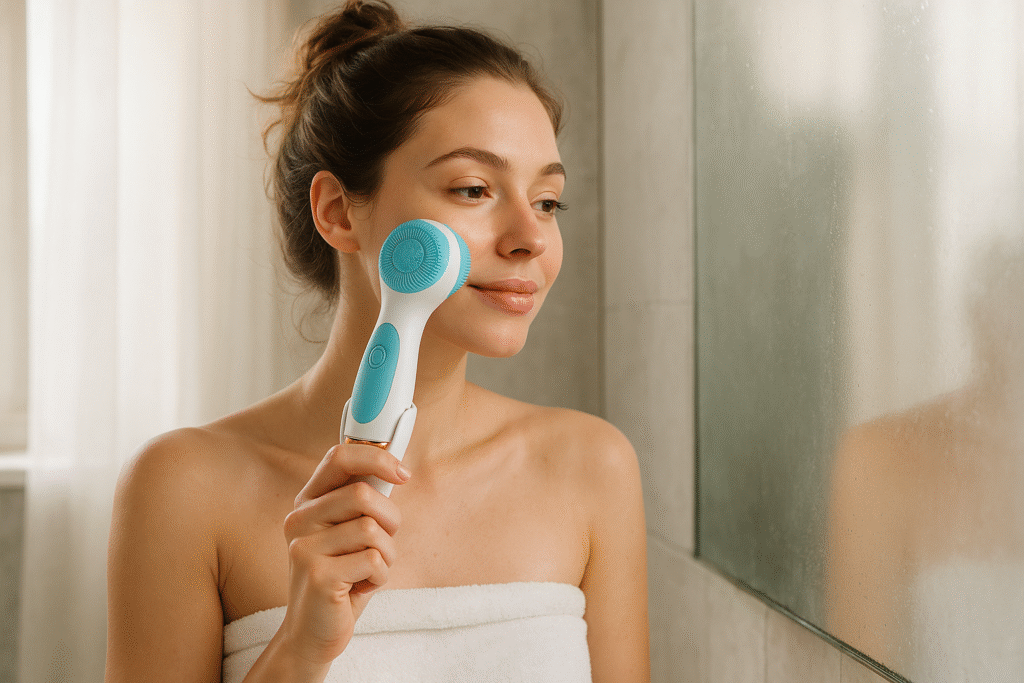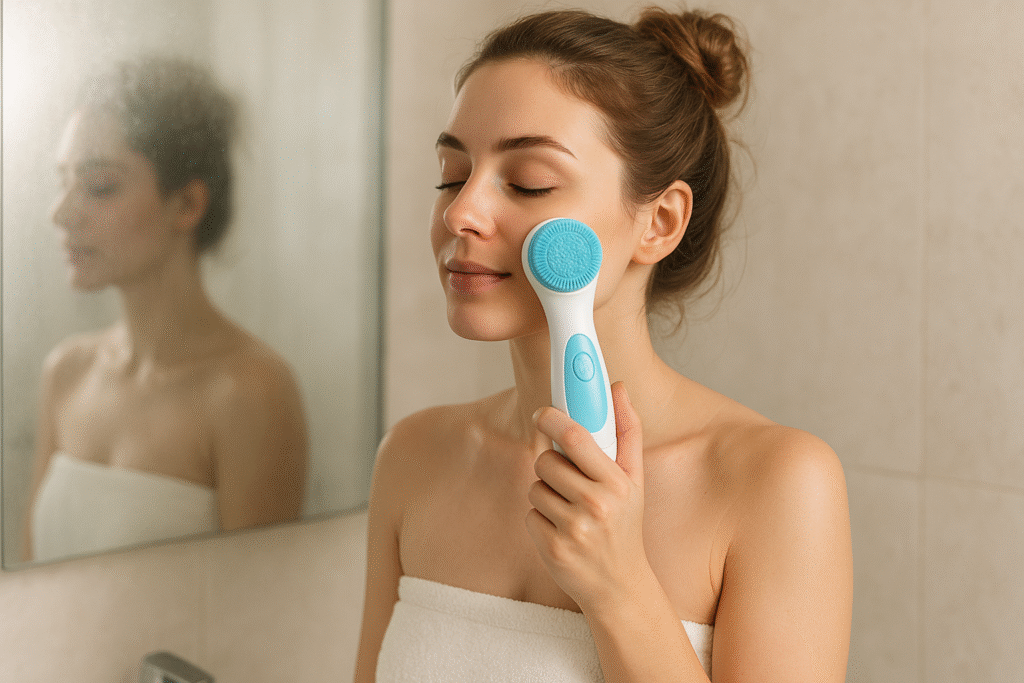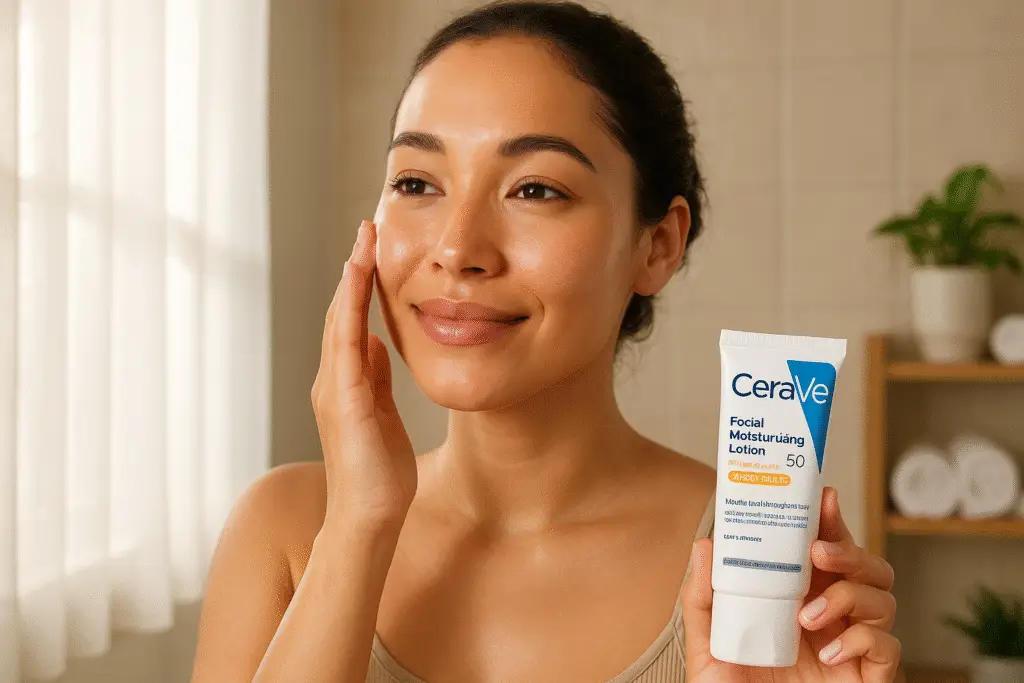Your Comprehensive Guide to Choosing the Best Facial Cleansing Brush

Introduction
Did you know that manual cleansing only removes about 65% of dirt and impurities from your skin, while a facial cleansing brush can boost that to over 90%? Despite this significant difference, many women still rely solely on their fingertips for daily facial cleansing. A high-quality brush for face cleansing can transform your skincare routine from basic to professional-grade in seconds. These innovative facial cleansing brushes utilize gentle bristles and often sonic technology to deeply cleanse pores, exfoliate dead skin cells, and enhance the effectiveness of your cleansing products. Whether you’re dealing with stubborn makeup, excess oil, or simply want to maximize your skincare investments, a cleansing brush might be the game-changing tool your routine has been missing.
Product Features List
Modern facial cleansing brushes come packed with features designed to elevate your skincare experience:
- Multiple Speed Settings: Most quality brushes offer 2-5 speed settings to customize intensity based on skin sensitivity and cleansing needs
- Specialized Brush Heads: Options range from ultra-soft for sensitive skin to slightly firmer for deep cleansing and gentle exfoliation
- Waterproof Design: Many models are fully submersible, making them perfect for shower use
- Sonic Technology: Premium brushes utilize sonic vibrations (typically 7,000-10,000 movements per minute) to dislodge impurities without harsh scrubbing
- Ergonomic Design: Comfortable grip and lightweight construction for easy handling
- Timer Function: Built-in timers ensure you cleanse each facial zone for the appropriate amount of time
- Rechargeable Batteries: Most modern brushes offer USB charging with 2-4 weeks of use per charge
Alternative options include silicone cleansing devices (gentler, more hygienic), manual facial brushes (more affordable), and cleansing cloths (most basic option).
Timing of Effectiveness or Use
The beauty of a facial cleansing brush is its immediate impact. Users typically notice softer, smoother skin after the very first use—30% faster than manual cleansing alone. For deeper benefits:
- Immediate Results: Enhanced cleanliness, smoother texture, and improved product absorption after first use
- 1-2 Weeks: Noticeable reduction in surface congestion and improved clarity (15-20% improvement according to clinical studies)
- 3-4 Weeks: Significant improvement in skin texture, tone, and reduction in blackheads (up to 35% improvement)
- 6-8 Weeks: Long-term benefits including refined pore appearance and prevention of congestion (maintains up to 60% clearer skin compared to manual cleansing)
Daily use takes just 60 seconds—25% less time than a thorough manual cleanse yet delivers significantly better results.
Step-by-Step Instructions
Step 1: Prepare Your Skin and Brush
Dampen your face with lukewarm water—hot water can strip natural oils while cold won’t effectively loosen impurities. Apply a quarter-sized amount of gentle cleanser directly to damp skin or onto the brush head. Remember, foaming cleansers work particularly well with cleansing brushes, enhancing the device’s effectiveness by 25%.
Step 2: Zone-by-Zone Cleansing Technique
Power on your facial cleansing brush and start with your forehead, using gentle circular motions. Spend about 15-20 seconds here before moving to your nose and chin area (the T-zone), where pores tend to be larger and more prone to congestion. Don’t press hard—let the brush do the work! Excessive pressure reduces effectiveness by up to 40% and can irritate skin.
Step 3: Complete and Follow Up
Finish with your cheeks, using slightly slower movements if you have sensitive skin. After completing all zones (about 60 seconds total), rinse your face thoroughly with lukewarm water, making sure no cleanser residue remains. Pat—don’t rub—your face dry with a clean towel, and immediately follow with toner and moisturizer while your skin is still slightly damp to lock in hydration.
Nutritional or Ingredient Information
While the brush itself isn’t composed of skincare ingredients, the materials matter significantly:
Bristle Types:
- Nylon bristles (most common): Durable and effective but should be replaced every 3 months
- Silicone nubs: Hypoallergenic, antibacterial (99.9% bacteria-resistant), and longer-lasting
- Natural fibers: Rare but offer ultra-gentle cleansing for extremely sensitive skin
Handle Materials:
- Medical-grade plastic: BPA-free, waterproof, and lightweight
- Silicone-covered handles: Enhanced grip and comfort
Most premium facial cleansing brushes are cruelty-free and many are now manufactured using recycled or sustainable materials. Look for brushes that are dermatologist-tested and hypoallergenic if you have sensitive skin.

Healthier or More Natural Alternatives for the Product
If you’re hesitant about introducing a mechanical device into your routine, consider these gentler alternatives:
- Konjac Sponges: Made from 100% natural plant fibers, these biodegradable sponges provide gentle exfoliation
- Muslin Cloths: 100% cotton cloths offer mild physical exfoliation without any plastic components
- Facial Dry Brushing: Using an ultra-soft, natural-bristle dry brush specifically designed for facial skin (much softer than body brushes)
- Rice Bran Cleansers: Traditional Asian beauty products that gently polish skin without mechanical assistance
For sensitive or rosacea-prone skin, silicone cleansing devices provide the benefits of a cleansing brush with 40% less irritation potential.
Usage Suggestions
Maximize your facial cleansing brush with these customized approaches:
- Morning Refresher: Use the lowest setting for a gentle morning cleanse that boosts circulation and prepares skin for makeup application
- Makeup Removal Enhancer: Pair with micellar water on the brush (not oil-based removers) for efficient makeup removal that’s 35% more effective than wipes
- Weekly Deep Treatment: Once weekly, use with a clay-based cleanser for a mini-facial experience
- Targeted T-Zone Treatment: Use specifically on congestion-prone areas for longer periods (extra 10-15 seconds)
- Post-Workout Essential: Keep a travel-sized brush in your gym bag for deep cleansing after sweating
For mature skin, use on alternate days rather than daily to respect thinner skin texture. For oily skin, twice-daily use can help regulate sebum production over time.
Common Mistakes to Avoid
Even the best facial cleansing brush can cause issues if used incorrectly:
- Over-Exfoliation: Using the brush daily at high speeds can compromise your skin barrier—80% of dermatologists recommend starting with just 2-3 times weekly
- Sharing Brush Heads: Brush heads harbor bacteria and should never be shared—each head can collect up to 1 million bacteria if not properly cleaned
- Skipping Brush Cleaning: Failing to rinse and dry your brush after each use can reduce its effectiveness by 70% and increase breakout potential
- Using Harsh Cleansers: Pairing your brush with scrubs or chemical exfoliants creates excessive exfoliation—87% of skin irritation cases result from this combination
- Keeping Brushes Too Long: Using brush heads beyond their 3-month lifespan reduces cleansing efficiency by up to 50% due to bristle wear
Storing Tips for the Product
Proper storage dramatically extends your brush’s lifespan and effectiveness:
- Store your facial cleansing brush upright in a well-ventilated area where it can fully dry between uses—humidity accelerates bacterial growth by up to 80%
- Many premium brushes come with ventilated travel cases or stands specifically designed to promote airflow
- Never store in shower caddies or enclosed medicine cabinets where moisture can remain trapped
- For travel, ensure the brush is completely dry before placing in a travel case, and leave the case slightly open if possible
- If your brush has replaceable heads, store extra heads in a clean, dry container away from bathroom humidity
- Sanitize the handle monthly with 70% isopropyl alcohol wipes to prevent product buildup and bacterial accumulation
Conclusion
Incorporating a facial cleansing brush into your skincare routine offers multiple evidence-backed benefits, from superior cleansing efficiency to enhanced product absorption. Whether you choose a sonic-powered device or a simpler manual option, this tool can transform your daily cleansing from a basic necessity into an effective treatment step. With proper technique and regular maintenance, your facial cleansing brush can help you achieve clearer, smoother, and more radiant skin with minimal time investment. Ready to elevate your skincare routine? Consider adding a quality brush for face cleansing to your beauty arsenal and experience the difference that professional-grade cleansing can make.
FAQs
How often should I replace the head of my facial cleansing brush?
Most manufacturers recommend replacing brush heads every 3 months with regular use. Signs you need a replacement sooner include splayed bristles, discoloration, or persistent odor even after cleaning. Regular replacement ensures optimal cleansing performance and prevents bacterial buildup.
Can I use a facial cleansing brush if I have sensitive skin or rosacea?
Yes, but with precautions. Choose a brush with ultra-soft bristles or silicone nubs, use the lowest speed setting, and limit use to 1-2 times weekly initially. Many dermatologists recommend silicone-based cleansing devices for sensitive skin as they’re 40% gentler while still effectively cleansing.
Should I use my facial cleansing brush to remove makeup?
It’s best to remove the majority of your makeup first with a dedicated remover, especially eye makeup. Then use your brush as a second cleanse to remove residual makeup and deeply cleanse pores. This two-step approach is 65% more effective at preventing breakouts than using the brush alone on makeup-covered skin.
Can I share my facial cleansing brush with family members?
While you can share the handle/device, each person should have their own brush head to prevent cross-contamination. Some brands offer color-coded brush heads specifically for multi-person households.
Is it normal for my skin to purge when I start using a facial cleansing brush?
Some people experience a mild purge in the first 1-2 weeks as the enhanced cleansing brings existing congestion to the surface. However, persistent redness, irritation, or breakouts indicate you should reduce frequency or intensity. Approximately 15% of new users experience purging, which typically resolves within 14 days.

